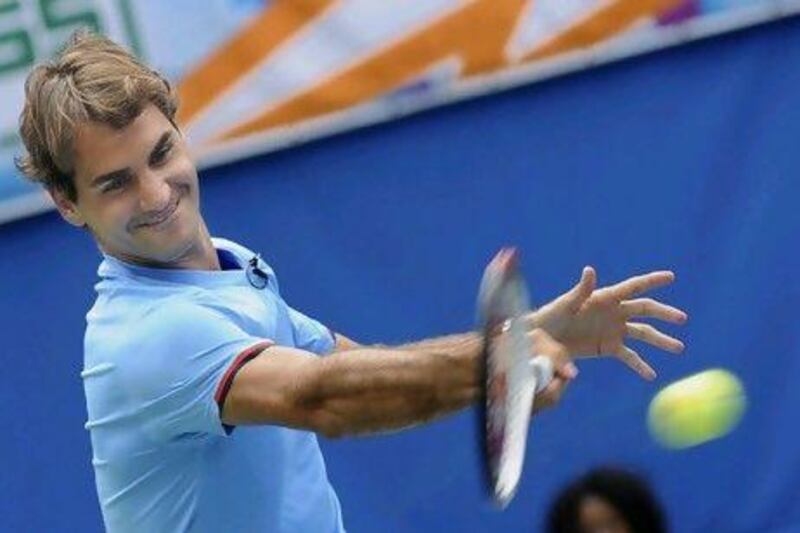Somehow, it seemed so easy for so many people to write off Roger Federer.
He was past his 30th birthday, they would point out.
Two years went by without any additions to his grand slam trophy case, the thinking went.
First Rafael Nadal, then Novak Djokovic, overtook Federer in the rankings and as the man to beat at major tournaments.
Well, look at him now.
The Wimbledon champion, once again, stretching his record total to 17 grand slam championships. Ranked No 1, once again. And, heading into today's start of the US Open, the favourite to reach the final, once again.
"I'm out of the business of predicting Federer anymore," said Andre Agassi, a two-time US Open champion and the runner-up to Federer in 2005. "He's continually surprised me with his achievements; he no longer surprises me.
"I think he has a lot more tennis in him. He maybe needs one or two things to fall for him to knock down a few more [grand slam titles] at this stage of his career, but he's certainly as capable of it as anybody I've ever seen."
Federer's pursuit of a sixth US Open title at the age of 31 will certainly be among the main angles to keep track of on the hard courts of Flushing Meadows.
Another key question is what sort of effect it will have on him the short turnaround and shift to hard courts after the grass court London Games.
"There's no doubt about it: this is not an ideal preparation," said Federer, routed 6-2, 6-1, 6-4 by Murray in the Olympic final on August 5, less than a month after beating him in four sets on the same court in the Wimbledon final.
"It's not impossible," Federer said, "but it's just very hard on the body and mind to travel halfway around the world, go on a different surface. ... In the past, you would take maybe a few weeks off for a top player, then prepare for three brutal weeks on hard courts, then come over here wanting to fire [on] all cylinders. This year, it's different."
But a dominant victory over Djokovic in Cincinnati earlier this month to win the Western & Southern Open title indicated he has not had too much trouble adjusting.
He once won 40 matches in a row at the US Open, a streak that ended with a five-set loss to Juan Martin del Potro in the 2009 final.
That was followed by semi-final setbacks against Djokovic each of the past two years, including what Federer calls "that brutal match with Novak" in 2011, when Federer took the first two sets, then held two match points, but could not close the deal.
On the first match point, Djokovic smacked a gutsy forehand return winner that barely landed on a line and drew something of a rebuke from Federer afterward.
"I never played that way," Federer said at the time. "I believe in the hard-work's-going-to-pay-off kind of thing, because early on, maybe I didn't always work at my hardest.
"So for me, this is very hard to understand how [he could] play a shot like that on match point."
Djokovic went on to victory in the final against Nadal, the 2010 US Open champion and 11-time major winner who is out with knee problems and will not be in New York.
Given how rare it is for a man past 30 to remain in the upper echelon of tennis - a not-quite-31 Federer was the oldest Wimbledon champion since Arthur Ashe in 1975 - and the ascension of a couple of rivals in their mid-20s, there were plenty of whispers that the Swiss superstar might be done in the top levels of the game. What, after all, was left to motivate him? What could drive him to keep up?
Djokovic and Nadal, to name two, never doubted Federer would reassert himself.
"He was always there," Djokovic said. "Last couple years, he didn't win a major, but he was in a couple of finals and always semi-finals. He's always playing close matches against whoever."
Federer beat Djokovic in the Wimbledon semi-finals, then topped Murray for triumph No 7 at the All England Club, tying Pete Sampras and William Renshaw (who played in the 1880s) for the most in history.
That also allowed Federer to return to No 1, a position that will take some effort to dislodge him from again.
* Associated Press
Follow us
[ @SprtNationalUAE ]





